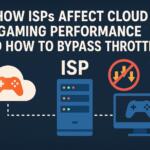Proxy detection systems use several methods to detect suspicious activities related to proxies. Below are some of the most common ones:
- IP Reputation: Many websites maintain blacklists of known proxy IPs based on historical data. Proxy servers often have poor reputations, leading to their automatic blocking.
- DNS Resolution: Websites may use DNS lookups to identify if a request is originating from a known proxy server or a VPN.
- Geo-location Mismatch: By analyzing the IP address location and comparing it with user behavior, sites can detect inconsistencies in geographical data, suggesting proxy use.
- HTTP Headers Inspection: Proxy servers often modify headers like ‘X-Forwarded-For’ or ‘Via’. Anomalies in these headers can reveal the use of proxies.
- WebRTC Leak Detection: WebRTC leaks allow websites to detect the real IP addresses even when the user is behind a proxy. This can expose the user’s actual location.
- Browser Fingerprinting: Techniques that analyze the unique attributes of a user’s browser, like installed plugins and screen resolution, to determine if they match typical proxy or VPN behavior.
How to Detect Proxy Detection
Detecting when a website is using proxy detection techniques can be challenging, but it’s possible to identify certain patterns. Tools like Burp Suite, Wireshark, and custom scripts can help in analyzing web traffic and response behaviors.
- Analyze Response Headers: Proxy detection techniques may be revealed in the response headers. Monitoring for errors such as 403 Forbidden or 451 Unavailable For Legal Reasons is a good indicator that proxy detection is in place.
- Check for CAPTCHA Challenges: CAPTCHA challenges, such as reCAPTCHA, are commonly triggered by proxy usage. Detecting the appearance of CAPTCHAs in response to requests indicates that proxy detection is active.
- Monitor for IP Blocking: Many proxy detection systems will block or rate-limit IP addresses suspected of being proxies. A sudden slowdown or block of traffic can suggest proxy detection methods at play.
Bypassing Proxy Detection Techniques
To bypass proxy detection, users typically utilize a combination of tools and strategies. Here are the most effective methods:
1. Using Residential Proxies
Residential proxies are IP addresses assigned by Internet Service Providers (ISPs) to homeowners. These proxies are harder to detect since they appear as legitimate residential IPs rather than data center IPs.
python
import requests
# Example of using a residential proxy with requests in Python
proxy = {
‘http’: ‘http://username:password@residential_proxy_ip:port’,
‘https’: ‘https://username:password@residential_proxy_ip:port’
}
response = requests.get(‘https://targetwebsite.com’, proxies=proxy)
print(response.text)
2. Rotating Proxies
Rotating proxies involve using a large pool of proxies to frequently switch IP addresses. This helps in avoiding detection by making traffic appear to originate from different users or locations.
python
import requests
from itertools import cycle
proxy_list = [
‘http://proxy1_ip:port’,
‘http://proxy2_ip:port’,
‘http://proxy3_ip:port’
]
proxy_pool = cycle(proxy_list)
for i in range(10):
proxy = next(proxy_pool)
response = requests.get(‘https://targetwebsite.com’, proxies={“http”: proxy, “https”: proxy})
print(response.status_code)
3. Use of VPNs
VPNs (Virtual Private Networks) provide an encrypted connection that masks a user’s IP address. While many VPN services are detectable by proxy detection systems, rotating through multiple VPN servers or using lesser-known VPN providers can sometimes bypass these systems.
# Command to connect to a VPN server
openvpn –config /path/to/vpnconfig.ovpn
4. Adjusting User-Agent Strings
By changing the ‘User-Agent’ string in HTTP requests, users can simulate different devices or browsers, making it harder for websites to identify proxy or VPN traffic based solely on browser data.
python
headers = {
‘User-Agent’: ‘Mozilla/5.0 (Windows NT 10.0; Win64; x64) AppleWebKit/537.36 (KHTML, like Gecko) Chrome/91.0.4472.124 Safari/537.36’
}
response = requests.get(‘https://targetwebsite.com’, headers=headers)
print(response.text)
5. Blocking WebRTC Leaks
To prevent WebRTC leaks, users can disable WebRTC in their browser settings or use browser extensions that block these leaks. This ensures that the real IP address is not exposed despite being behind a proxy.
javascript
// Example of blocking WebRTC in JavaScript
navigator.getUserMedia = function() {
alert(“WebRTC is disabled”);
}
6. Using Anti-Detection Tools
Specialized tools like ProxyMesh, ScraperAPI, or Anti-Captcha services are built to bypass proxy detection systems. These services rotate proxies, solve CAPTCHAs, and handle other types of detection challenges automatically.
# Example using ScraperAPI to bypass proxy detection
curl ‘http://api.scraperapi.com?api_key=YOUR_API_KEY&url=https://targetwebsite.com’
Conclusion
Bypass techniques for proxy detection are highly specialized and involve an intricate understanding of the methods used to identify proxies. While it is possible to circumvent some of these techniques using advanced tools and strategies, success largely depends on the sophistication of the detection systems in place.
We earn commissions using affiliate links.









![10 Best VPN for China [year]: Bypass The Great Firewall Best VPN for China](https://www.privateproxyguide.com/wp-content/uploads/2021/10/Best-VPN-for-China-150x150.jpg)
![Nimble Proxy Review: Fast and Reliable Proxy Solutions [year] Nimble Proxy Review](https://www.privateproxyguide.com/wp-content/uploads/2023/03/Nimble-Proxy-Review-150x150.jpg)